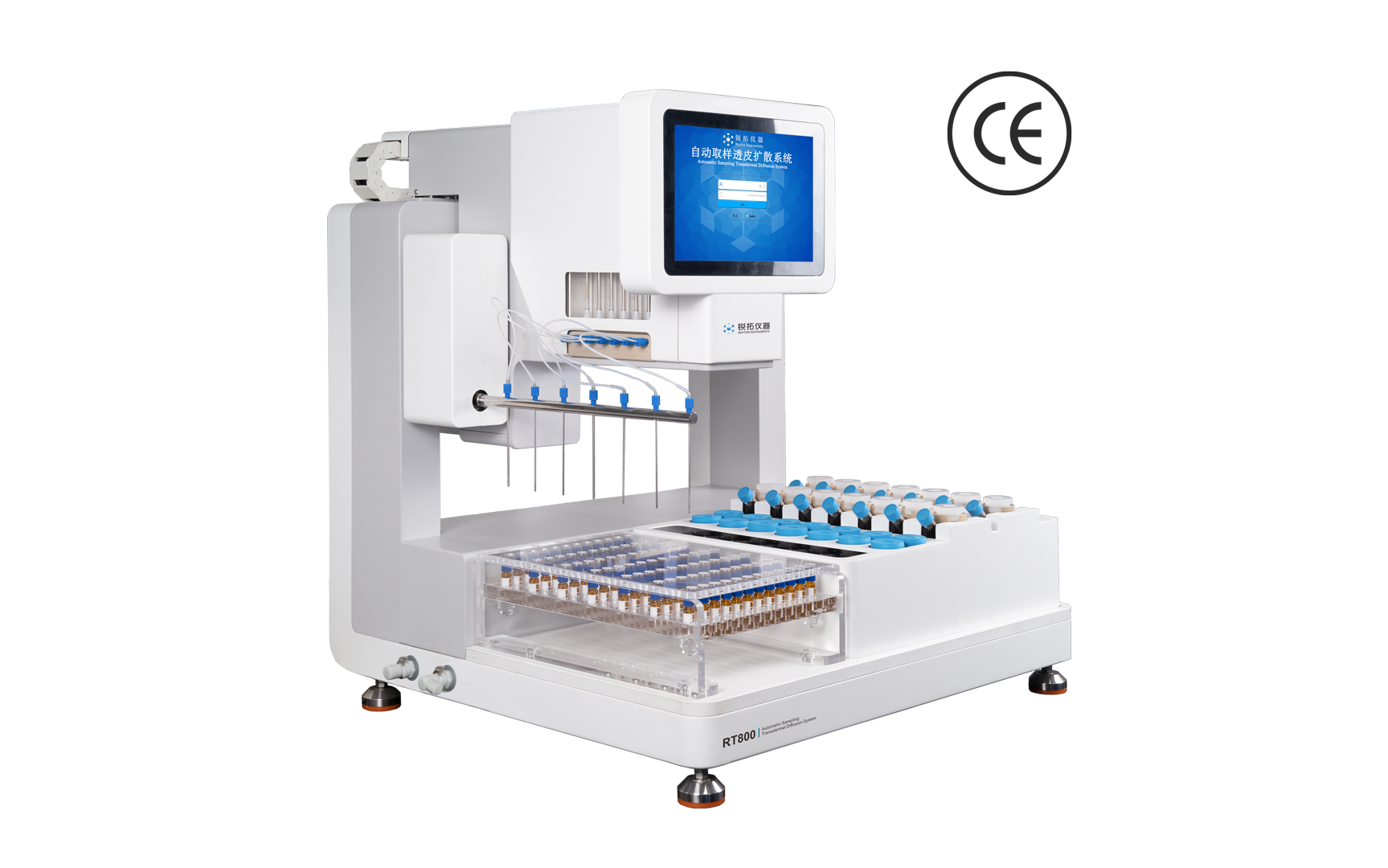Plaster
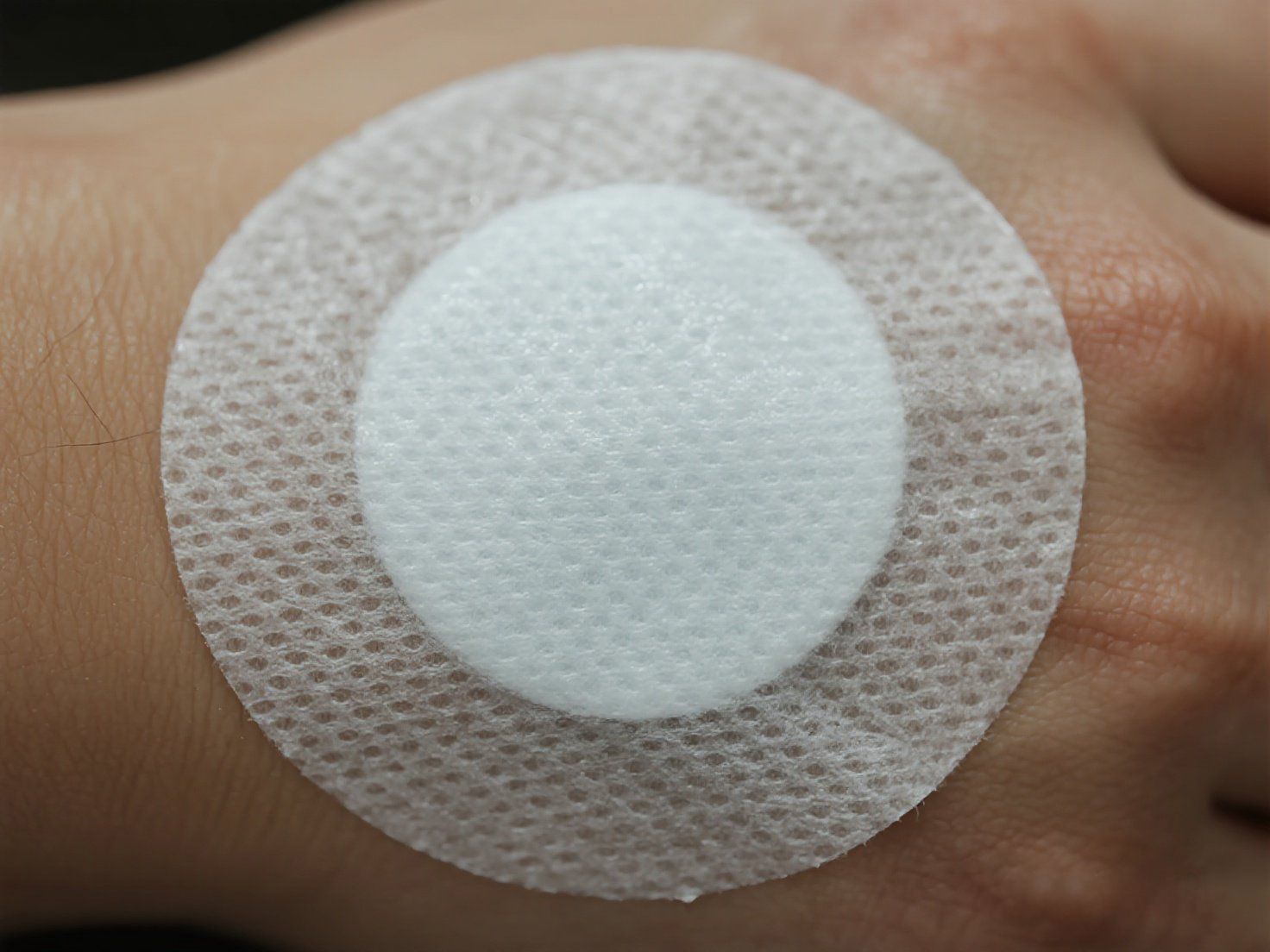
Plaster is one of the dosage forms of semi-solid preparations. It refers to a thin sheet-like preparation made by mixing raw drugs with suitable substrates into a paste and applying it to a backing material for skin application. It has the characteristics of no first-pass effect on the liver, avoiding gastrointestinal damage, having few toxic and side effects, long-lasting efficacy, and being convenient to use, which makes it favored by researchers. Among them, rubber paste refers to the mixture of drug or medicinal material extracts with a rubber-based substrate A kind of plaster applied to the backing material, Rubber plaster in semi-solid preparations refers to a kind of plaster in which the extract of drugs or medicinal materials is mixed with a rubber-based base and applied to the backing material.
Get Free Quote
Experimental parameters
| Test system | Raytor RT800 Automatic sampling transdermal diffusion system |
| Diffusion cell | Standard Franz vertical diffusion cell (inner aperture: 15mm) |
| Sample loading method | Attach a circular patch with a diameter of 15 mm to the artificial membrane |
| Temperature | 32℃±0.5℃ |
| Sampling time | 1, 2, 3, 4, 5, 6, 8, 12 hours |
| HPLC detection parameters | (High-performance liquid chromatography (HPLC) analysis of the drug concentration in the sample is required for the samples obtained.) |
| Detector | UV 278nm |
| Flow rate | 1.0mL/min |
| Mobile phase | Methanol -0.2% phosphoric acid solution |
| Chromatographic column | Hypersil BDS C18 |
Experimental results
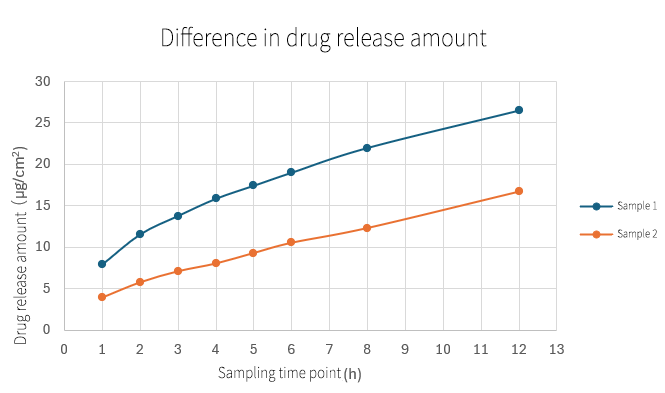
1. Difference in cumulative release amount The release amount differences between samples were determined by the sampling time point and the drug concentration at each time point. The experimental results are shown in Figure 1. There was a significant difference in drug concentration between the two samples at each sampling point

2. Differences in release rates The release rate of the sample was expressed by the square root of the cumulative release amount of the drug (μg/cm2) and the time (t), that is, the Higuch formula: M=kt 1/2, where the K value represents the release rate of the drug. The result is shown in Figure 2. The average release rate of sample 1 is 7.4562, and that of sample 2 is 5.0715, indicating a significant difference in release rates between the two samples.
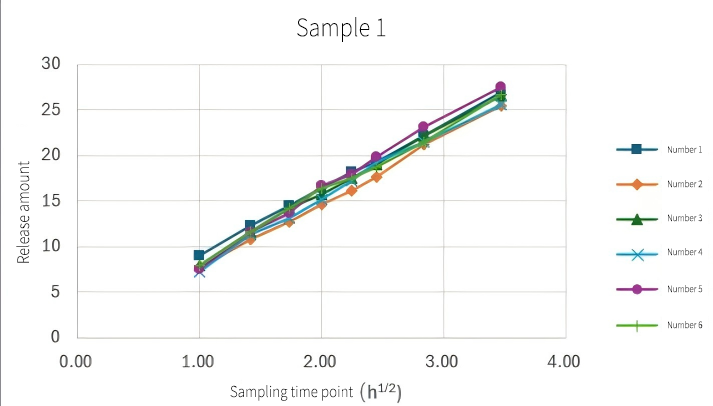
To ensure that the experimental results can truly reflect the differences among samples, it is necessary to examine the testing methods. The relevant guidelines for the validation of analytical methods in the Chinese Pharmacopoeia state that the purpose of the validation of analytical methods is to prove that the established method is suitable for the corresponding detection requirements, and the key indicator of validation is repeatability. In this case, six groups of tests were carried out in parallel for two samples under the same test conditions, and the results are shown below
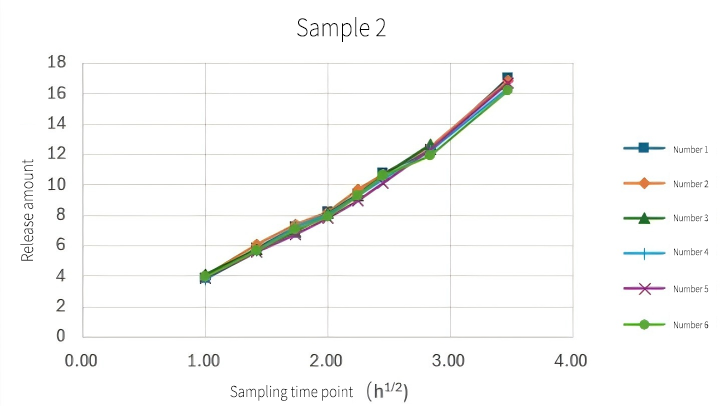
The cumulative release curves of the two samples had a good overlap under six numbers of parallel experiments, and the relative standard deviation of the six parallel experiment curves of sample 1 was 4.27%. The figure for Sample 2 is 2.34%. After six numbers on different samples under the same method, the relative standard deviations obtained were all small, indicating that the instrument has good testing stability.

4. Data equivalence determination The slopes of the two batches of test results (T and R respectively) are calculated as ratios. After sorting the calculation results, the ratios of the 8th and 29th slopes are taken as the lower and upper limits of the 90% confidence interval. The results of this test show that the lower limit and upper limit are 142.28% and 151.94% respectively. In the guiding principles, both the lower and upper limits must be within the range of 90% to 111% to be regarded as equivalent. The results clearly exceed the prescribed range, indicating that the two batches of drugs are not equivalent.
Conclusion
Solid dosage forms, as a way of drug formulation innovation, have gradually attracted the attention of researchers. However, semi-solid preparations, due to their complex processes and relatively difficult method development, pose certain challenges to researchers in the development of preparations. For this reason, researchers need to use appropriate instruments and equipment to assist themselves in solving a series of problems during the development of semi-solid preparations.
From the above case sharing, it can be seen that the automatic sampling transdermal diffusion system can provide strong and favorable support for the in vitro release research of semi-solid preparations. It can compare the cumulative drug release amount and cumulative release rate among samples and significantly distinguish the differences among samples. Moreover, the testing method can meet the requirements for method repeatability and sample equivalence as stipulated in the guiding principles.

